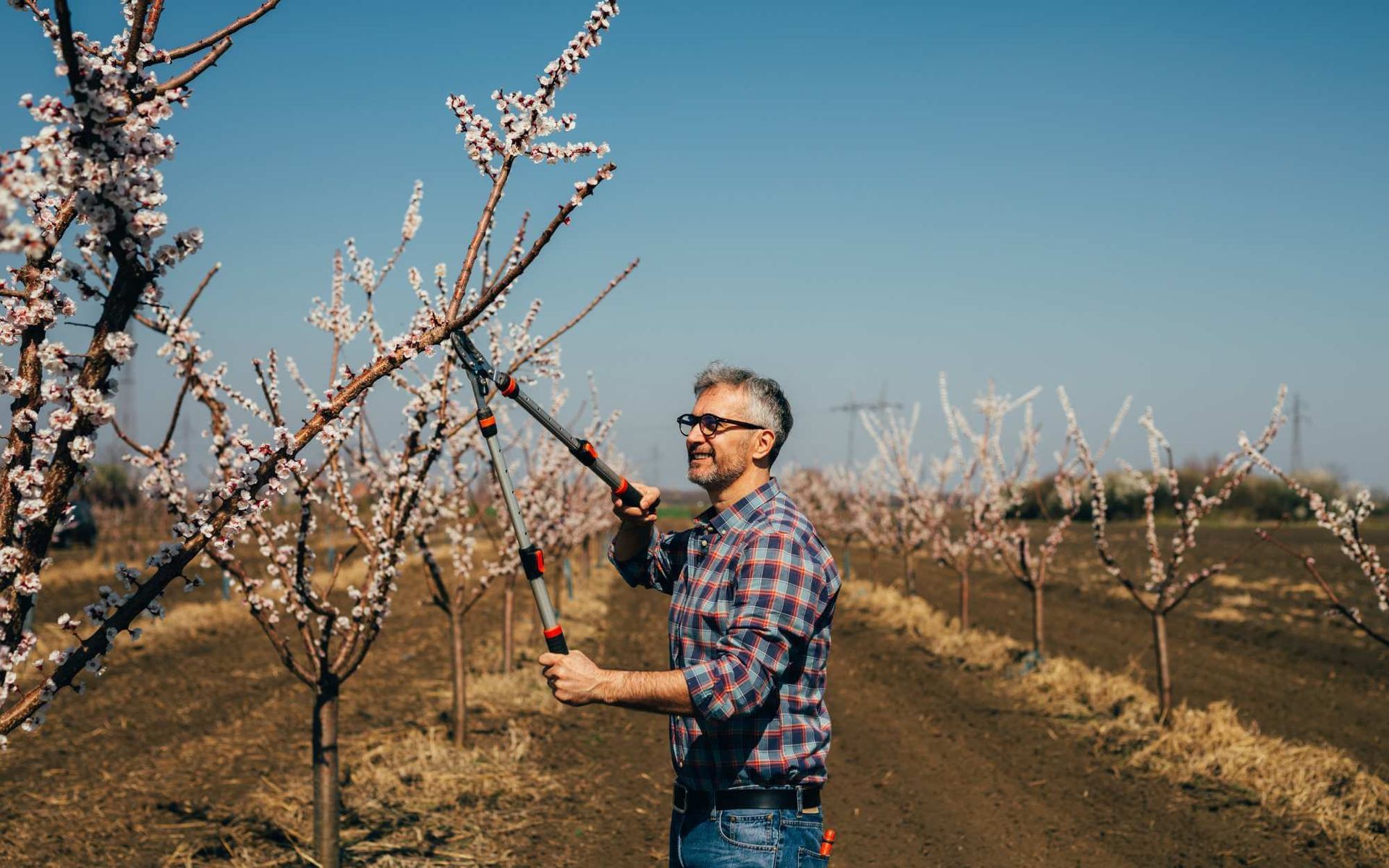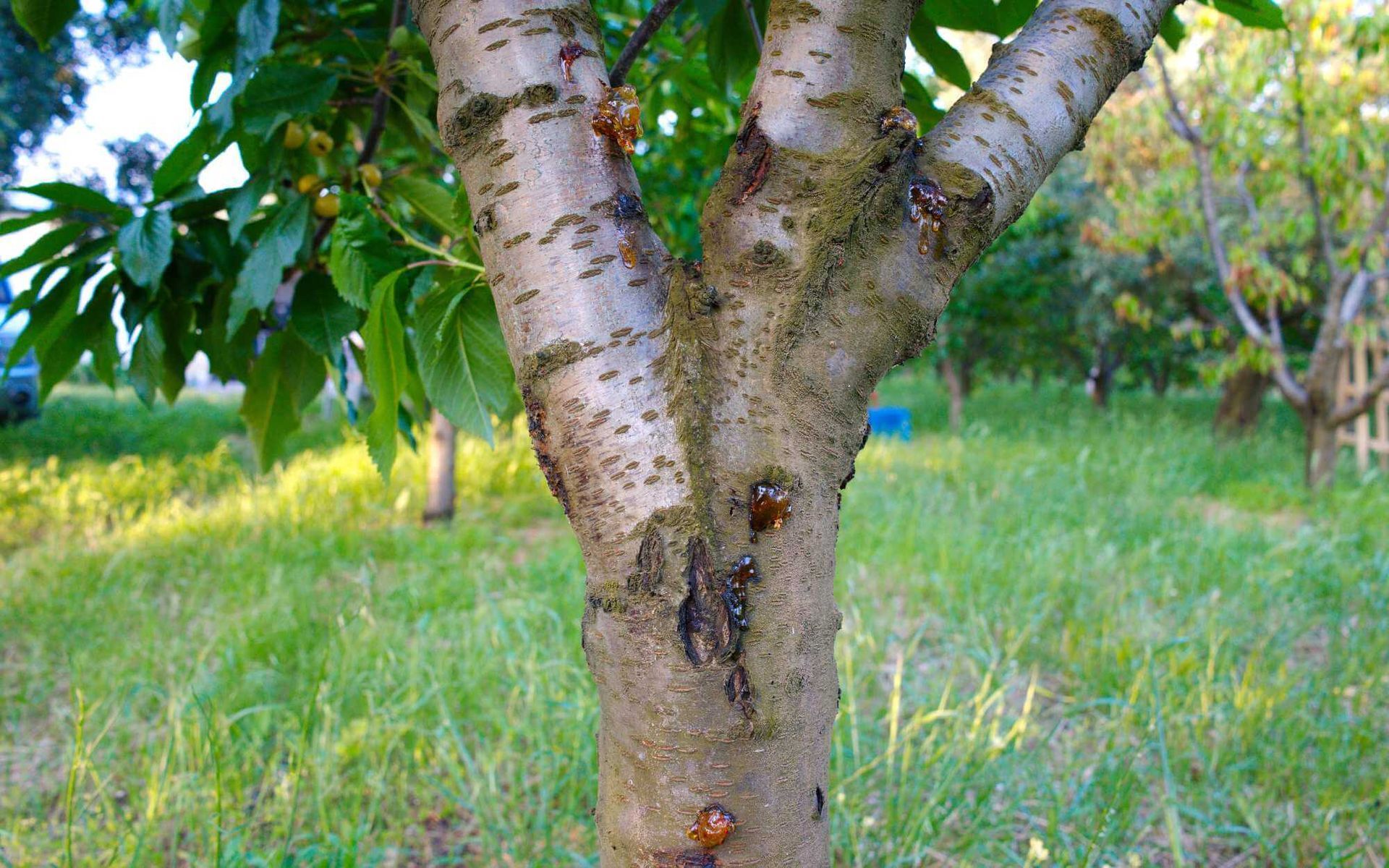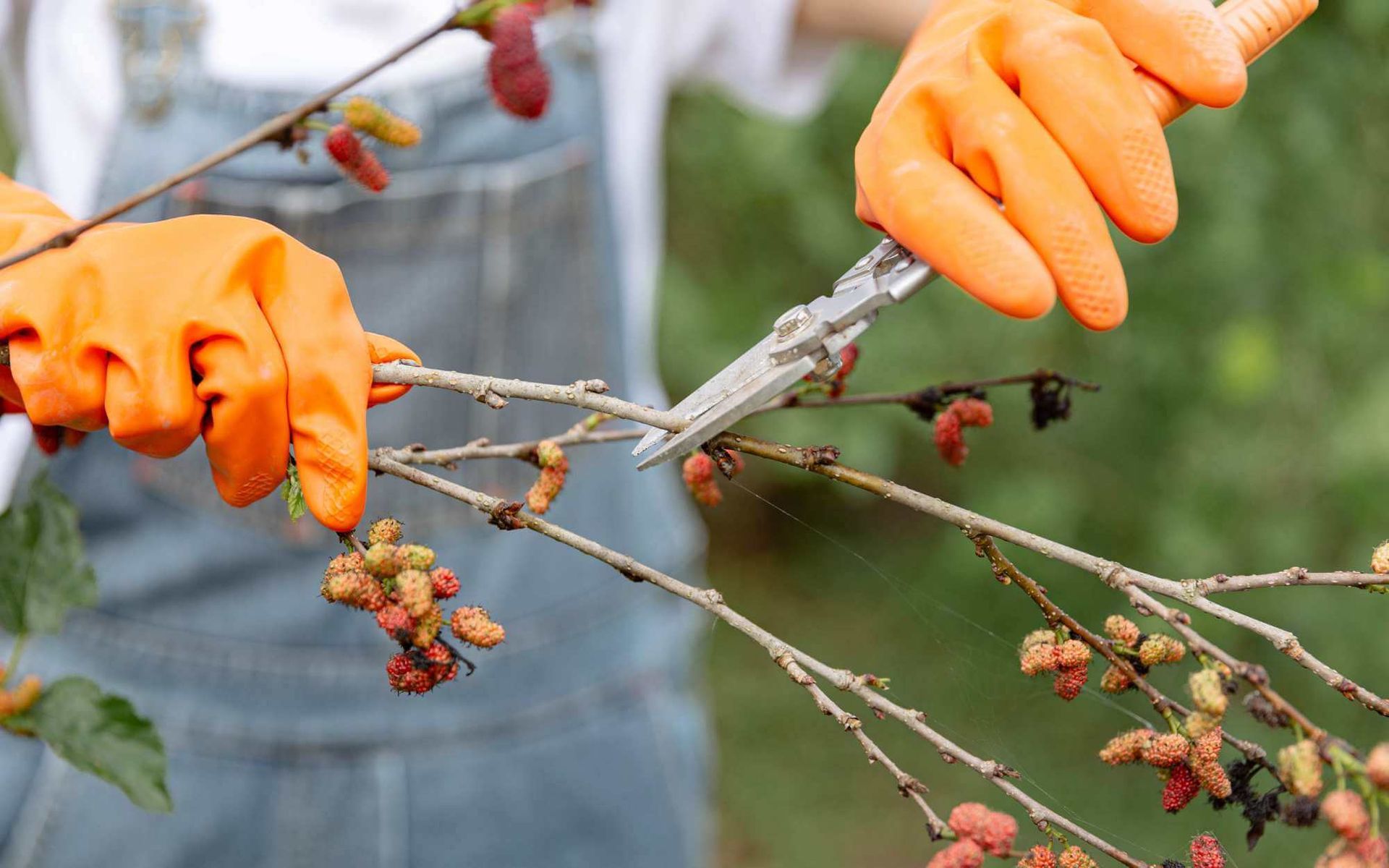Pruning Strategies to Prevent Fruit Tree Diseases
PUBLISHED ON
SHARE THIS ARTICLE

As fruit tree owners, we know the joy of biting into a fresh, home-grown fruit, and the despair when our precious trees fall prey to disease. More often than not, fruit tree diseases result from improper or neglected care.
One of the most effective preventive measures is pruning. This horticultural practice not only shapes the tree and encourages better fruit yield but is also a critical line of defense against disease. By adopting the right pruning strategies, we can protect our trees from many common ailments and ensure they remain healthy and productive.
Today, we'll dive into the importance of pruning and share strategies for doing it right. So, roll up your sleeves - let's save our fruit trees together!
Common Fruit Tree Diseases

Fruit trees, while rewarding, are often susceptible to various diseases. These illnesses can significantly impact tree health and fruit production.
- Apple Scab: Primarily attacking apple trees, this fungal disease results in dark, scaly lesions on fruit and leaves. It reduces both the aesthetic quality and the overall yield of the fruit.
- Peach Leaf Curl: Affecting peach and nectarine trees, this infection causes leaves to curl and discolor. Severe cases can stunt growth and impact fruit production.
- Fire Blight: This bacterial disease can affect a variety of fruit trees, including apple and pear trees. It causes a burnt appearance on branches and may even result in tree death.
- Brown Rot: A common problem in stone fruit trees, brown rot leads to browning and rotting of the fruit, rendering it inedible.
- Citrus Canker: Characterized by raised, corky lesions on fruit, leaves, and stems, citrus canker negatively affects the health of citrus trees and decreases fruit quality.
Each of these diseases not only decreases fruit yield but also weakens the overall health of the trees, making them more vulnerable to other pests and diseases.
The Role of Pruning in Preserving Fruit Trees
Pruning fruit trees plays a significant role in maintaining the vitality and productivity of your green giants.
By thinning out branches, pruning enhances air circulation and sunlight penetration, creating an environment less conducive to fungal and bacterial diseases. It's also critical for removing infected or damaged limbs and branches, preventing the spread of disease and pests to healthy parts of the tree.
Additionally, pruning helps control the tree's size and shape, promoting more balanced and vigorous growth. This enhances the tree's overall health and improves fruit quality, as the tree can direct more of its resources to fruit production rather than excessive vegetative growth.
Pruning Strategies for Disease Prevention
Effective pruning strategies involve appropriate timing, correct techniques, and proper sanitation of tools. Each plays a significant role in disease prevention.
Timing and Frequency of Pruning: Timing is key to successful pruning. Pruning should ideally be performed during late winter or early spring when trees are dormant. This helps minimize stress and allows trees to recover faster. The frequency of pruning depends on the tree's age and health; however, regular annual pruning is generally recommended.
Proper Pruning Techniques: Correct pruning techniques involve making clean cuts at the right places. Cuts should be made at a 45-degree angle, just above a bud or branch. Avoid leaving stubs as they can attract pests or become sites for disease infection.
Sanitizing Pruning Tools: Sanitation of pruning tools is crucial to prevent the spread of disease. Before and after each use, clean tools with a disinfectant such as rubbing alcohol or a bleach solution. This kills any pathogens and reduces the risk of transferring diseases between trees.
Specific Pruning Techniques for Different Fruit Trees

Pruning techniques can vary based on the type of orchard. Here's how to properly prune apple, citrus, peach, and pear trees.
Apple Trees: Apple trees have a natural tendency to grow vertically, which can lead to overcrowding in the center. Regularly prune to maintain an open center, remove water sprouts, and promote horizontal branch growth.
Citrus Trees: Pruning citrus trees mainly involves removing dead or diseased wood and thinning the canopy to allow light penetration. However, avoid heavy pruning as it can reduce fruit production.
Peach Trees: Peach trees require regular pruning to ensure high-quality fruit. Maintain an open center and thin out crowded branches. Frequent pruning also stimulates the growth of the fruit-bearing wood.
Pear Trees: Pear trees tend to grow upright, similar to apple trees. To stimulate horizontal growth, prune in a manner that encourages the tree to grow outwards and limit vertical growth.
Additional Measures for Disease Prevention
Regular tree inspection and monitoring are pivotal in disease prevention.
Timely identification of signs such as discolored leaves, unusual growths, or spots can allow early intervention, mitigating possible damage. The use of a magnifying glass or a camera can help in close examination of the symptoms.
Equally important is proper tree nutrition. Providing trees with a balanced diet of essential nutrients helps bolster their immunity against diseases. This includes regular watering, application of appropriate fertilizers, and ensuring an optimal soil pH level.
Remember, well-nourished young trees are more resilient and have a better chance of warding off diseases and pests.
Safeguard Fruit Trees Against Diseases
Pruning is a vital practice in maintaining fruitful, disease-free trees and shrubs. It enhances air circulation, and sunlight penetration, and prevents disease spread by removing infected branches. The technique also contributes to size control and balanced growth.
Regular tree inspections and proper nutrition further bolster tree health. However, expert guidance is crucial to understand appropriate pruning methods and timings for different tree varieties. Hire our
professional tree disease management team to greatly improve your orchard's productivity and longevity.
Want a free quote or some friendly advice? Call our team today:






